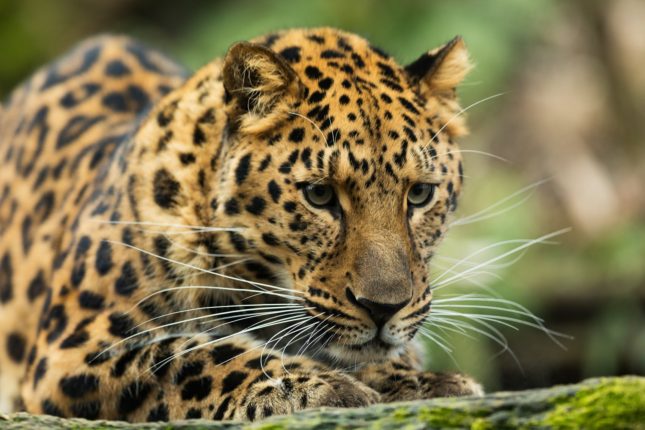
10 Cute Endangered Animals You Absolutely Want To Cuddle
One flaw with us humans is that we often let the exterior influence how we feel. In the case of endangered animals, the more grotesque-looking ones (like the aye-aye) take a back seat to the tigers and pandas, which admittedly, are more adorable. That’s not always a negative, however.
Tigers and pandas, along with a number of others, are what conservationists call the poster animals for environmental preservation because they have one thing going for them: They’re too cute to be gone. They are often used to spread the message about pollution, climate change, habitat loss, the need for wilderness preservation, poaching, and many such issues. And it’s working! People are more inclined to listen to the plight of cute endangered animals and the effect trickles down to the – no offense meant – less attractive ones.
Is that really so? Absolutely! Let’s go back to the pandas as an example, shall we? Seeker.com points out to a recent study published in the journal Conservation Biology saying that other species behind the limelight are affected positively by the conservation efforts centered around giant pandas.
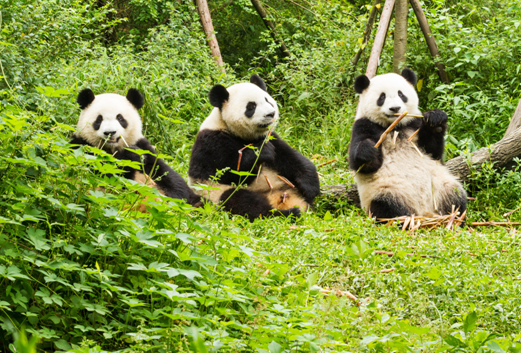
“The researchers focused on biodiverse hotspots,” the website states, “which are areas where there was a greater number of different kinds of species: they found that 96 percent of the panda’s range overlaps with areas identified as the most important ‘hot spots’ on Earth.”
“Some of the species – 14 mammal, 20 bird, and 82 amphibian species – were also vulnerable. All these species are now sheltered under the protective umbrella of the giant panda, so in this case pandas have become an ‘umbrella species.’” By protecting one, it ends up protecting all of the others in the pandas’ habitat.
Do you want to know more about other cute endangered animals and their status? The truth might hurt but knowing all about them may be the key that will lead to more serious conservation efforts. These images and descriptions will be all that we have left if we don’t start making a difference and protect these animals now.
1. Sand Cats
View this post on Instagram
Sand cats are one of the least-observed species in the world for a number of reasons. One is because it lives entirely on the desert and two, they are just naturally shy. In a 375-square-kilometer desert area in Southern Israel, only 11 sand cats were observed. In the western part of the United Arab Emirates, most of reported sand cat sightings are anecdotal at best and the more reliable ones are recorded over a decade ago!
It was only in 2015 when scientists managed to get 46 photos of three individual sand cats at a protected area called the Baynouna. Right now, it is estimated that there are no more than 10,000 sand cats in the wild but the number may actually be much lower because of the lack of data regarding the animals.
Why would an animal as cute as a Sand Cat become endangered?
Arid ecosystems in North Africa and in the Middle East, part of the sand cat’s habitat, is rapidly being changed into places of human settlement and activity. People bring livestock as well as dogs and cats with them which compete with sand cats for prey and may also transmit diseases.
Sand cats may also fall victim to the traps set for other animals and if they are the targets for such traps, it is because they are sold as pets. A large part of its habitat is also destroyed because of civil wars and political strife.
2. Egyptian Tortoise
View this post on Instagram
Tortoises have a reputation of being slow, lumbering, and big. Slow and lumbering, yes, but big does not apply to the Egyptian Tortoise, or sometimes called the Kleinman’s tortoise or Leith’s tortoise.
It is approximately just five inches long and does not even weigh half a kilogram when fully grown. The irony of it all is, the Egyptian tortoise is now extinct in Egypt and can only be found in Libya, where there are only over 7,000 of them left in the wild.
Why would an animal as cute as an Egyptian tortoise become endangered?
Its cuteness is its demise, to be quite frank. As one conservationist puts it, the Egyptian tortoise’s cuteness is the mammoth problem facing the miniscule reptile. Its numbers continue to whittle down because of the high demand for the tortoise as exotic pets.
Because they only measure no more than the size of a one-pound coin at birth and no more than 10 cm when mature, smugglers easily hide them in suitcases or even toilet paper rolls. Thousands of them are smuggled as pets every year just to put a smile on the faces of kids and adults alike who should know better.
Omar Attum, a biology professor at Indiana University Southeast, notes that there are significantly more Egyptian tortoises in captivity compared to those left in wild habitats. The primary driver behind the reduction of tortoises numbers is collection for the pet trade. Loving to death, literally.
The Egyptian tortoise has three disadvantages, explained Attum.
- Everyone can keep them because they are small
- They’re so cute that everyone wants one
- They’re not expensive, even though they’re an endangered species ― so almost everyone can afford to buy one
3. Axolotl Salamander
View this post on Instagram
The first time I saw an axolotl salamander, I thought “Wow! Nature made the first emoji!” I mean, what else could it be with its smiley face, that wild-looking “hair,” and big head (not to mention the external gills)? Additionally, these salamanders can almost regenerate anything in their bodies – whether it’s an amputated limb or a crushed spine – in stunning perfection!
Oddly enough, the axolotl’s other name is Mexican Walking Fish but it’s not a fish but an amphibian that likes to stay underwater most of the time. It is nearly extinct in its Mexican habitat, however, with no fewer than 700 living in the wild.
Why would an animal as cute as an Axolotl become endangered?
Apparently, tilapia and carp are immune to the salamander’s charm. These fish were introduced into their habitat and effectively decimated the axolotl population by preying off the juveniles. Still, even without the invasive species, most of their habitat has been compromised anyway that’s why they are in the critically endangered list.
Axolotls once made its home in the interconnected lakes that filled the basin of Tenochtitlan, where modern-day Mexico City now stands. Over time, these lakes have been diverted and paved over, with pollution killing off most aquatic life including the axolotls.
4. Slow Loris
View this post on Instagram
The slow loris’ classification differs from region to region but at least one species, the Javan slow loris is classified as critically endangered by the IUCN. There are no recent data about its population but studies have shown that they have low population density with only 0.20 to 0.02 individuals per square kilometer in their natural habitat.
Why would an animal as cute as a slow loris become endangered?
It’s easy to spot the recurring theme here: If you’re cute, that could be your downfall. The slow loris is no exception. With its wide eyes and innocent look, the demand for the slow loris in the illegal pet trade is high. YouTube videos, for example, render them as cute house pets effectively fuelling the illegal pet trade industry.
Well, they could be a cute house pet, but most of these people don’t realize the horror these animals have gone through before ending up in their backyards (or wherever they keep them). Because slow lorises have toxic bites, illegal pet traders have to remove their teeth and it’s no casual trip to the dentist by any means. They do these operations without applying antibiotics or local anesthesia!
Aside from the illegal pet trade, the Javan rainforest is seriously in trouble as well. A large part of these forests has been cleared out, paving the way for palm oil plantations, housing, or agriculture. This situation made them more vulnerable to pet traders and traditional medicine patronizers who believe slow lorises can treat leprosy and heal broken bones.
5. Black-Footed Ferret
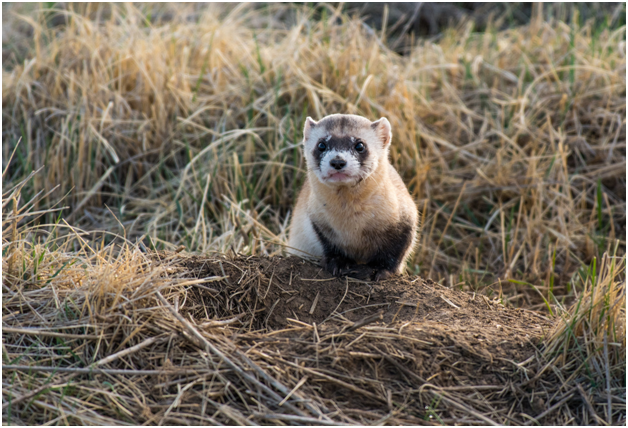
The black-footed ferret is a conservation success story but still an endangered species nonetheless. They were thought to be extinct in the 1970s (more on that later) which was fortunately not the case. In 1987, there were only about 18 black-footed ferrets living in the world, leading to an aggressive breeding program in captivity.
From that point, there are about 200 ferrets being released in the wild each year in 19 places including Saskatchewan, Canada and Chihuahua, Mexico. Their population in the wild as of 2013 is estimated to be at 1,200.
Why would an animal as cute as a black-footed ferret become endangered?
It’s because of the prairie dogs. The ferrets’ diet is mainly composed of prairie dogs, ground squirrels found in the United States, Canada, and Mexico. These squirrels were massively hunted and poisoned by ranchers, which they consider to be pests. With the prairie dogs now decimated to only about 5-10 percent of their usual numbers, the ferrets disappeared with them.
And then there’s the habitat narrative, as always. With the wholesale conversion of prairie to crop land, it further made a negative impact on the ferrets and their prey, making their habitat severely fragmented.
By 1985, there were only about 10 ferrets in the wild until the aforementioned captive breeding programs bring the number back up to over 1,000.
6. Ili Pika
View this post on Instagram
If somebody had said the Ili Pika is the inspiration for the Pokemon character Pikachu, I would have bought that story hook, line, and sinker.
The Ili Pika’s plight, though, is nothing but fun. It was discovered in 1983 by a Chinese conservationist named Li Weidong and since then, their population has dwindled 70%. It doesn’t help that it is an extremely shy animal living in a fairly rugged terrain, thousands of meters up in the Tian Shan mountain range in Northwestern China.
To give you an idea how rare it is to see an Ili Pika in the flesh: After its discovery in 1983, the next confirmed sighting was in 2014, 21 years later.
Why would an animal as cute as an Ili Pika become endangered?
No one would have poached a creature living that high up in the mountains, so the Ili Pika’s case is a curious one. Scientists assume that the population drop of Ili Pikas is because of climate change. As the planet gets warmer, these cute endangered animals who thrive in the cold had to go up a couple thousand meters than their previous habitat.
Disease may also be a factor but until the Chinese government officially forms a group to protect the species, it could be extinct before our knowledge of these creatures fills a couple of textbook pages.
7. Iberian Lynx
View this post on Instagram
Cats, whether big or small, are always going to be cute and the Iberian Lynx is no exception. These wild cats are found in the Iberian Peninsula as its name suggests but it is considered one of the most endangered of all feline species.
It is estimated that there are only 400 Iberian Lynxes in the wild and that is already an improvement. By the turn of the 21st century, there were only around a hundred of its kind left but has recovered because of habitat preservation, rabbit population management, and lynx population monitoring.
Why would an animal as cute as an Iberian Lynx become endangered?
The sharp decline of the lynx’s population is because there isn’t enough prey in their habitat. Their staple food – rabbits – began to disappear because of myxomatosis, rabbit hemorrhagic disease, and overhunting.
Human activities are not helping, either. The website Big Cat Rescue says a number of Iberian Lynxes are killed by traps set for other animals and by cars on the increasing number of roads on their home turf.
8. Amur Leopards
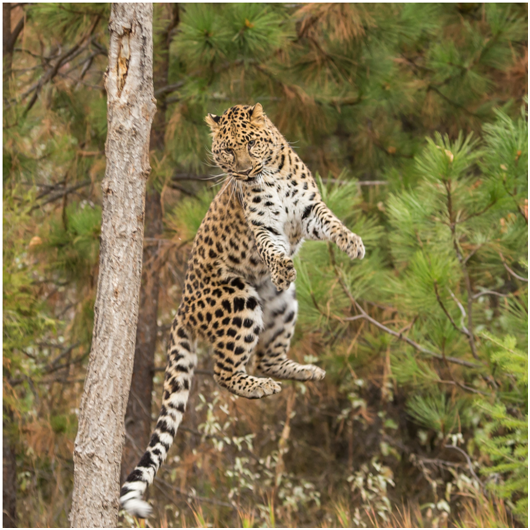
How close are we to losing Amur Leopards forever? It was previously mentioned that the Iberian Lynx is one of the most endangered feline species but unfortunately, an Amur Leopard is much rarer. It is estimated that as few as 19 to 26 individuals are living in the wild and the highest estimate is at 60.
In 2011, there were about 176 captive Amur Leopards in zoos around the world. The better news is, as recently as April 2018, there were 84 adult and 19 Amur Leopard cubs observed inside Russia’s Land of the Leopard National Park.
Why would an animal as cute as an Amur Leopard become endangered?
The Amur Leopard is imperiled by its own genetics. Because of their dwindling population, they have a low level of genetic variation making them vulnerable to health complications such as infertility.
But how did their population become so low in the first place? Because of us humans and because of agriculture. Between the years 1970 and 1983, 80% of Amur leopard’s habitat was lost (logging, agricultural land conversion, etc.). These changes led to fewer prey available so some leopards turned to deer farms to hunt where they were killed en masse by farmers.
Poaching was also a problem. According to the WWF, the beautiful fur sold for over $1,000 in 1999 in one Russian province. (Adjusted for inflation, that’s a little over $1,500 today.) The leopard fur trade has been happening 60-70 years prior and even though no one is supporting the industry today (at least not publicly), the damage has already been done and the population will not rebound anytime soon.
9. Red Panda
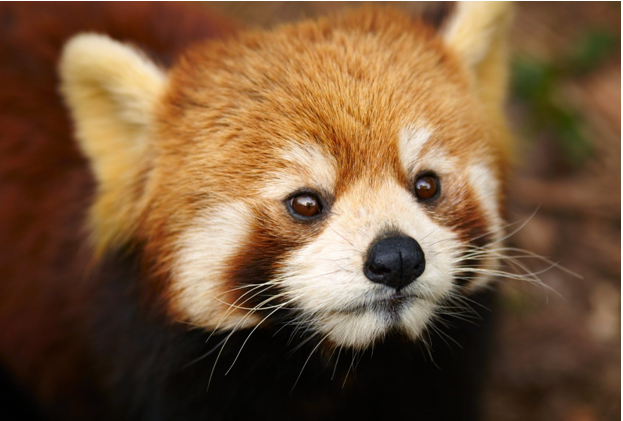
The Red Panda is called by a plethora of names (such as the lesser panda, the red cat-bear, or the red bear-cat) but my personal favorite is its Chinese name hunho, literally translated as “firefox.” (Yes, just like the browser!)
As if the names aren’t enough, the Red Panda’s classification even has scientists confused. Is it a panda? A raccoon? A fox? According to DNA studies, they belong to their own unique family called the Ailuridae.
As of 2014, the estimated number of Red Pandas in the wild is less than 10,000 but the decline continues. Only half of the total potential habitat is being used by the species so the number may actually be lower than the estimates. Red Pandas have been classified as endangered by the IUCN since 2008.
Why would an animal as cute as a Red Panda become endangered?
We have the usual suspects here: Deforestation, poaching, accidental trapping, and an illegal pet trade.
Deforestation is literally fatal to the Red Panda because it lives up in the trees. In its Himalayan forest habitat, trees are being cut down at an alarming rate that scientists predict it will lose two-thirds of its forest by 2100.
They may also be victims of poaching mainly because some view its fur as some sort of a special, good luck token. Some also hunt them because of its perceived medicinal value, which is ridiculous to say the least.
We can go on and on about the reasons but it always ultimately comes down to one thing: Humans are either too greedy or too careless, and some could be both.
10. Monk Seal
View this post on Instagram
Of the three monk seal species, one is already extinct (Caribbean) and two (Mediterranean and Hawaiian) are critically endangered. Even with the two endangered monk seal species combined, there could be less than 2,000 of them left in the wild!
Although the Hawaiian species are more numerous than their Mediterranean cousins, it is only by a few hundred making it possible that a disease or a weather change can wipe out either species in an instant.
Why would an animal as cute as a Monk Seal become endangered?
Monk seals are hunted by humans for meat, skins, and oil in the 19th and 20th centuries and that nearly wiped them out. Even without that threat now, they still get in trouble because of human activities. They may get entangled with fishing nets and marine debris which could result in drowning.
The Mediterranean species is especially sensitive to human disturbance, with coastal development and tourism driving them away from their suitable habitat. In general, interaction between monk seals and humans could have a negative impact on the animals. It may disrupt needed monk seal rest cycles and expose them to diseases or attacks from pets.
Are there things that I can do?
After a brief consideration about endangered animal species, you may have noticed a pattern: They don’t normally get into trouble by themselves, but people brought (and are bringing) the trouble to them.
We need to see the bigger picture here. It’s not only about us or our whims. We are all connected in this great circle of life and if one suffers, we all suffer as well. If you don’t see that, it’s only a matter of time before you are forced to.
Here are some simple things we can do to help protect and save endangered species:
- Education. It’s not just about the Ili Pikas in the Tian Shan mountain range or the Amur Leopards in Russia. Teach your family about the role of each organism right in your own backyard. Awareness is the first essential step.
- Say NO to plastic products. Wild animals can get entangled with these things and if it ends up on the oceans, fish and other aquatic creatures may ingest it leading to their death.
- Do NOT patronize the black market. Sometimes, when we travel or on vacation, we may buy things we do not realize are illegal such as tortoise shells, ivories, or corals. Be vigilantly aware and do not patronize these products.
- Grow native plants. Native plants are always better because it attracts native animals species. Introduced species have already done enough damage in native populations around the world and you don’t want that to happen in your own turf.
- Embrace the vegan lifestyle. If you’re not ready to make that big of a change yet, then why not consider the main reason of deforestation and animal habitat destruction? For example, animal agriculture is responsible for over 90% of the Amazon forest destruction. 90%! That means, more often than not, when they clear out acres of rainforest in the Amazon, it’s because they’re raising cows and other livestock for people to eat! Have you thought how crazy that notion is?


